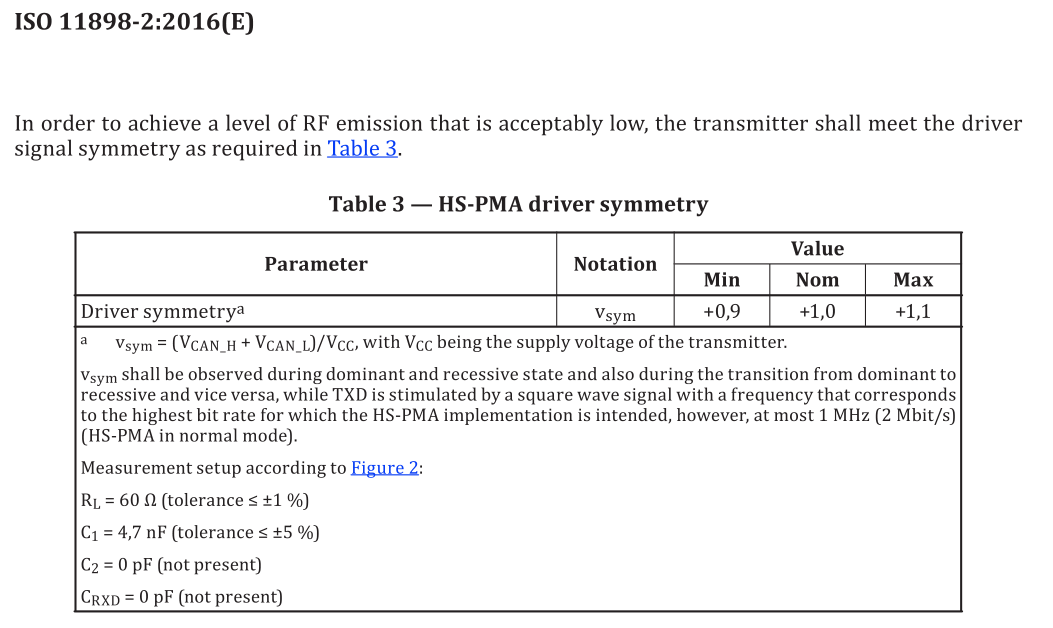hi teams:
Could you please help confirm the following questions?
The voltage symmetry issue in CAN chip testing is as follows:
According to the national standard GT/B 41588.2-2022/ISO 11898-2:2016
Vsym=(VCAN-H+VCAN_L)/Vcc, VSYM standard is 0.9-1.1
Test image waveform 2 green indicates CAN_ H. Waveform 3, blue represents CAN_ L. Waveform MATH purple as CAN_ Com (CAN_H+CAN_L)
Due to Vcc being 5V, VSYM=(Min=0.878, Max=1.092) can be calculated based on the waveform, which does not meet the standard.






